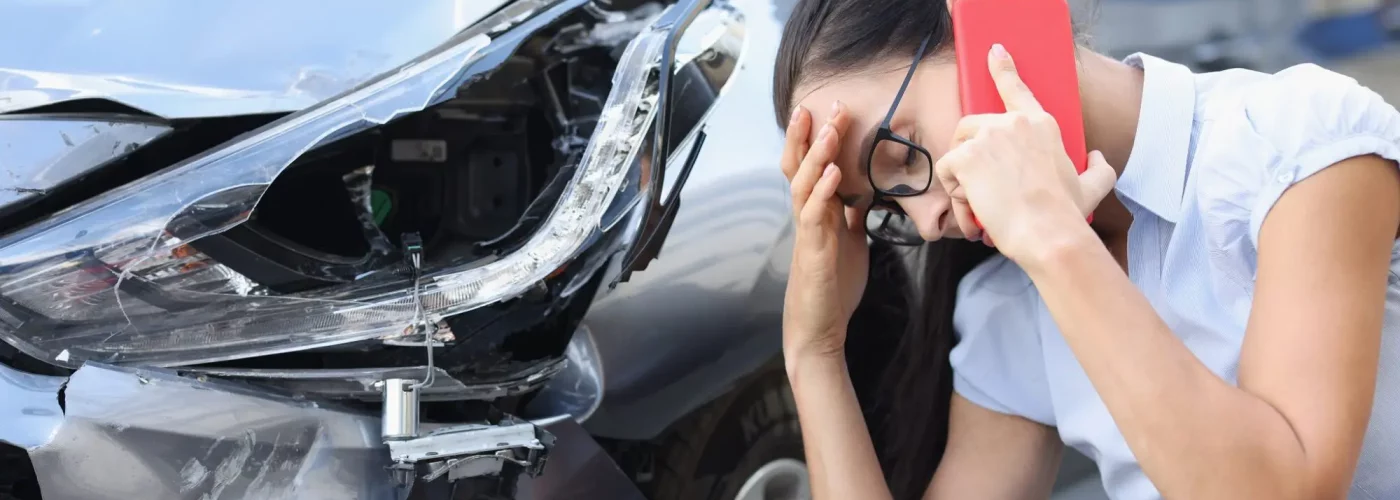In the bustling world of roadways, where vehicles interweave and traverse like a symphony of motion, the unexpected can suddenly disrupt the rhythm. Accidents—those unforeseen disruptions—hold the potential to jolt even the most seasoned drivers. This comprehensive exploration will navigate the realm of common types of car accidents, unveiling the art of managing them. By dissecting each distinctive scenario, the objective is to equip readers with knowledge that serves as a safety net, offering reassurance amid the uncertainties of the road. Like car accident attorneys meticulously analyzing cases to uncover the truth, this article aims to analyze accident scenarios, unveiling strategies to navigate the aftermath of various collisions.
Rear-End Collisions:
Imagine a domino effect: one car abruptly stops, and the vehicle behind it doesn’t react quickly enough, leading to a rear-end collision. These incidents are as common as sipping morning coffee, often arising from sudden stops or the perils of distracted driving. When this unexpected thrust propels your vehicle forward, engaging in proactive measures is imperative. Start by exchanging insurance information, a task akin to sharing contact details at a social gathering. Moreover, documenting damage through photos—much like capturing memories—can provide valuable evidence. Equally important is the recognition that seeking medical attention is as crucial as reporting the incident. As tending to a wound prevents further complications, addressing potential injuries promptly safeguards your well-being.
T-Bone Accidents:
Envision a game of chance where one vehicle crashes into the side of another at a perpendicular angle—a T-bone accident. These dramatic collisions often unfold at intersections, with drivers sometimes running red lights, much like disregarding rules in a game. When the side impact leaves you rattled, summoning the authorities and obtaining witness information is the first resolution act. This is akin to enlisting impartial judges in a competition to ascertain fairness. Waiting patiently for law enforcement to arrive is analogous to observing the protocols of a contest, ensuring a just determination of fault.
Sideswipe Incidents:
Visualize two cars on parallel paths, their sides brushing against each other like strangers exchanging glances—a sideswipe accident. These incidents frequently occur during lane changes or while merging onto highways, resembling brief interactions among strangers. When the unexpected graze shakes your equilibrium, pull over to the side of the road. Much like a courteous exchange of apologies after a minor collision, assess the damage, capturing photos as if preserving the scene. Exchanging information with the other party is comparable to extending a handshake of acknowledgment, reflecting civility amid an inadvertent encounter.
Single-Vehicle Crashes:
Imagine navigating a winding road when suddenly, your vehicle embarks on a solo dance—a single-vehicle crash. Factors like adverse weather conditions or mechanical failures can trigger these incidents, similar to how weather influences outdoor events. Maintaining a calm demeanor is paramount despite the aftermath of such a performance. This mirrors the composure an audience expects from performers even when unexpected circumstances arise. Calling emergency services to the scene is equivalent to calling for help during an unplanned act. Just as prompt intervention during a mishap can mitigate its effects, seeking assistance swiftly enhances the chances of a smoother recovery.
Multi-Vehicle Pileups:
Think of a row of dominoes falling rapidly—a multi-vehicle pileup. These complex collisions often unfold under adverse weather conditions, mimicking the chaos a storm can bring. When entangled in this whirlwind of events, prioritizing personal safety is paramount. Like finding shelter during a storm, checking for injuries amid the chaos is a priority. Promptly contacting emergency services echoes the urgency of seeking refuge during turbulent weather. This proactive action mirrors seeking sanctuary from the elements, ensuring the aftermath is as controlled as possible.
Hit-and-Run Episodes:
Envision a shadow fading into the night—a hit-and-run accident. It’s akin to a magician vanishing after performing a trick, perplexing the audience. In this scenario, recording details about the fleeing vehicle and any available witnesses is comparable to capturing fleeting memories within a crowd. Just as preserving an impression of a fleeting moment is vital, retaining these crucial details assists authorities in their pursuit of accountability. Similar to how an audience would rely on their observations to decipher a vanishing act, your observations contribute to piecing together the puzzle of a hit-and-run incident.
Dealing with Insurance and Legal Matters:
Navigating the aftermath of an accident often involves interactions with insurance and legal entities, much like addressing an audience after a performance. Reporting the incident promptly to your insurer, documenting the damage with photos, and seeking legal counsel if necessary can mirror an artist’s careful preparation before stepping onto a stage. Just as performers rehearse their lines and cues to ensure a seamless show, your preparedness in dealing with insurance and legal matters enhances the efficiency of the process. Documenting the incident through photographs is a visual script, much like the blueprints performers use to guide their actions on stage. Seeking legal counsel, if the situation demands, can be likened to seeking guidance from mentors before a critical performance, ensuring that your decisions align with the desired outcome.
Conclusion :
Accidents in the road’s grand theater are unexpected plot twists that can bewilder drivers. By venturing through the prevalent types of car accidents and unraveling the steps to address them, this article aspires to offer a comprehensive script for tackling these unforeseen moments. As drivers, our roles extend beyond mere steering and gear-shifting; they encompass adeptly responding to unpredictable scenarios with a composed demeanor. Much like car accident attorneys assume multifaceted roles to navigate complex legal narratives, drivers must become adept problem solvers when confronted with accidents. Armed with knowledge and a touch of experience, drivers can deftly traverse the intricate plotlines of car accidents, ensuring their journey continues uninterrupted, even after the curtain falls on the unexpected scene.





